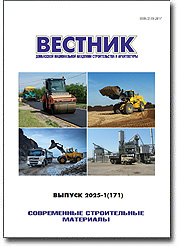Application of Secondary Cubic Residue from Phenol-Acetone Production as a Binder for Road Construction
Abstract: The production of a complex organic binder (COB) by blending pitch-like secondary cubic residue (SCR) from phenol-acetone production with road bitumen is the most effective way to utilize SCR as a binder for road construction. The dependence of the physicomechanical properties of COB on the content of its components can be analyzed using «composition-properties» curves. The ratio of COB components should ensure a specified set of properties considering the regional conditions for the operation of concretes prepared with the complex organic binder. This approach allows for a reduction in the consumption of road bitumen, significantly decreases the environmental impact of secondary cubic residues from phenol-acetone production, and reduces direct costs for producing one ton of mixture. This is crucial as approximately one billion tons of waste from production and consumption are generated annually, with only 8–15 % being utilized as secondary material resources while the rest ends up in landfills, sludge collectors, and spoil tips. Waste occupies large areas, with a total volume reaching 25 billion tons. Landfill infiltration, burning spoil tips, dust generation, and other factors lead to the migration of toxic substances, resulting in contamination of groundwater and surface water, deteriorating air quality, soil resources, and more. Costs for waste disposal and burial account for over 20 % of product costs.
Keywords: secondary cubic residue from phenol-acetone production, composition optimization, complex organic binder, petroleum road bitumen.
Pages: 71-82.
For citation:
For citation: Bespalov, V. L.; Kordyukov, A. A.; Serebryakov, I. R. [et al.]. Application of Secondary Cubic Residue from Phenol-Acetone Production as a Binder for Road Construction. – Text : electronic. – In: <em>Proceeding of the Donbas National Academy of Civil Engineering and Architecture</em>. – 2025. – Issue 2025-1(171) Modern building materials. – Р. 71-82. – doi: 10.71536/vd.2025.1c171.9. – edn: oaqoyr. – ISSN 2519-2817. (in Russian)

Issue 2025-1 (171)
Journal: Proceeding of the Donbas National Academy of Civil Engineering and Architecture
Publish house: Donbas National Academy of Civil Engineering and Architecture
Journal: Proceeding of the Donbas National Academy of Civil Engineering and Architecture
Publish house: Donbas National Academy of Civil Engineering and Architecture
